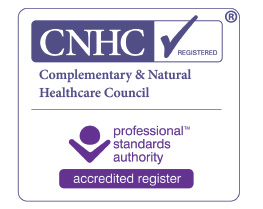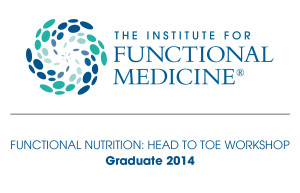Detox to Reduce Inflammation is the first step in my series 10 Steps to Reduce Inflammation, but the theme of detoxification will be continued in three further posts. You can find a navigation map to find your way around the series at the end of the introductory post 10 Steps to Reduce Inflammation – What is Inflammation and Why Reduce Inflammation?
In this post the main focus is on how you can reduce your exposure to toxins.
In the next post (COMING SOON) I describe how to actively support your body’s natural detoxification pathways and increase the rate of detoxification with nutrition and lifestyle changes to increase elimination of toxins you have already been exposed to.
The emphasis throughout will be on the kind of generalised detoxication you can do on an ongoing basis, rather than short-term detox programmes or treatments to reduce your body burden of specific toxins using a more targeted approach.

Detox reduces inflammation but inflammation inhibits detox
The reason you need to detox to reduce inflammation is because toxins are themselves another trigger of the inflammatory response (1).
In recent decades over 100,000 new chemicals have been released into the environment and used in consumer products, many of which are toxic (2) and will therefore be contributing to your burden of inflammation.
Inflammation results in tissue destruction and the formation of free radicals. These are molecules that are particularly reactive so they can further damage and permanently impair the function of proteins, DNA and lipids and cause disease including diabetes, cardiovascular disease and autoimmune disease. You can learn more about free radicals in the post The Colours That Heal You – Eating The Rainbow.
Oxidative stress
Free radicals are kept in check by antioxidants and thus an important factor in ageing and disease is the balance between free radicals and antioxidants. When free radicals overwhelm the antioxidant defence system we have what is known as oxidative stress which can impair proper physiologic function (3, 4).
The self-perpetuating cycle of toxic load, inflammation and oxidative stress
So inflammation results in the production of free radicals, but toxins also result in the production of free radicals and thus increase the risk of oxidative stress (5). Both inflammation and toxins will therefore deplete your antioxidant reserve, but antioxidants are also needed for detoxification so detox is impaired by inflammation (6).
Therefore we need to reduce inflammation to enable detoxification, and we also need to detox to reduce inflammation.

Endocrine disrupting chemicals
Some toxins also mimic hormones and thus interfere with hormone signalling by binding to hormone receptors. These are the endocrine disrupting chemicals and are found in plastics, pesticides, cosmetics, flame retardants, surfactants, sunscreens and personal care products and have been studied for their negative effects on fertility, premature puberty, endometriosis, heart disease, autoimmune disease, ADHD, asthma and other conditions (7, 8, 9).
How toxins can cause weight gain and inflammation – obesogens
Besides triggering inflammation directly some toxins, known as obesogens, may be a cause of weight gain and obesity (10).
How weight loss could harm your health
Many toxins are fat soluble and fat tissue is a major storage site for toxins to accumulate (11). This may have the advantage of safely storing the toxins away from other tissues, although total body burden may be increased. If you then lose weight too quickly the toxins are released into general circulation and this can have huge impacts on health. In fact there is some evidence that in elderly individuals with a higher body burden of bioaccumulated toxins weight loss is actually associated with increased mortality (12).
Some of these toxins are not easily metabolised and can bioaccumulate in fat tissue over the years (13), bioaccumulation meaning that the rate of toxin excretion does not match the rate of incoming toxins that are then stored in the body in ever increasing amounts. The bioaccumulated toxins can then be a key driver of obesity, and the effect is more pronounced in individuals with less active detoxification enzymes due to their genetic make-up (14).
You will also see in the next post how foods can impact the activity of detoxification enzymes and other ways in which you can safely increase detoxification.
It is often said that the body increases fat storage in order to protect itself from toxins. For this reason – and because of the dangerous consequences of mobilising too many toxins from fat storage at once – improving your body’s natural processes of detoxification should be considered in any weight loss programme
Many endocrine disrupting chemicals are obesogens (15), which makes sense when you understand that fat tissue is itself an endocrine organ, which means that it responds to hormonal signalling and also secretes hormones, especially hormones that affect energy balance and metabolism. Endocrine disrupting chemicals can alter the programming of fat cell development, increase storage in fat tissue and interfere with the signalling of hormones regulating appetite and satiety (16). So if you are finding it difficult to lose weight a toxic burden could be at play.
Fat tissue also secretes inflammatory signalling molecules and obesity can be viewed as a state of chronic low-grade inflammation (17), so losing fat mass whilst preserving muscle mass will be of great help in reducing your burden of inflammation. Many of the 10 Steps to Reduce Inflammation covered in this series are also key to losing weight.

When you have more fat tissue there is another consequence. Some obesogens bind to and activate oestrogen receptors and so have an oestrogenic effect. This can compound the oestrogenic effect of having excess fat tissue, which increases levels of an enzyme that converts testosterone into oestrogen.
In women this may be the reason why being overweight is linked with an increased risk of breast cancer, with overweight or obese postmenopausal women having three times the risk of breast cancer when compared to postmenopausal women of normal weight (18).
In men the increased oestrogen and reduced testosterone levels have been linked with insulin resistance, loss of muscle and bone mass, increased blood pressure and risk of heart disease, fatigue, insomnia, depression and erectile dysfunction, all of which we often put down to ageing (19). Obesity also appears to increase the conversion of testosterone into oestrogen in the prostate gland, and may thus drive prostate enlargement (20).
So you can already see how much could potentially be gained from safe detox to reduce inflammation, to safely lose weight and to balance your hormones.
How to reduce your toxic burden
How to reduce your toxic burden is a huge subject in itself and in this post I will cover some of the more common toxins you will be exposed to. I won’t go into detail on some of the more obvious exposures, but here I will just mention that to detox and reduce inflammation you would certainly need to minimise your exposure to alcohol, cigarette smoke and chemical fumes such as car exhaust as much as possible.
Mould, mycotoxins and inflammation

Another sometimes obvious toxic exposure is to mould. Mycotoxins (toxins from microfungi such as moulds and mildews) are known to bioaccumulate and can continue to have a negative impact until they are detoxified (21).
Whereas the initial exposure can often be obvious if the mould is clearly visible in your home or workplace, you may need to consider exposures from earlier in life as part of your detox to reduce inflammation. I have worked with clients for whom we detected a burden of mycotoxins apparently from mould they were exposed to decades previously.
Inflammation and oxidative stress in any part of the body could be caused by mycotoxin exposure (22).
Mycotoxin exposure is a known driver of Alzheimer’s disease progression.
Alzheimer’s disease has been categorised into 3 subtypes, one of which is primarily driven by inflammation, and another by a toxic burden. Because of the relationship between inflammation and detoxification you can see there will be much overlap between these 2 subtypes and any Alzheimer’s disease prevention programme should involve detox to reduce inflammation (23).
Mycotoxins can cause ‘leaky gut’ and gut dysbiosis (an imbalance or overgrowth of gut flora) and there is some evidence they may play a role in triggering and exacerbating inflammatory bowel disease and may play a role in autoimmune disease (24, 25), as well as having oestrogenic and anti-androgenic endocrine disrupting properties (26).
The mould exposure often comes from water-damaged buildings and can cause headaches, respiratory complaints, fatigue, cough, irritation of the eyes and skin, weight gain and joint pain (27).
People living or working in damp buildings have been found to have an increased risk of respiratory infections, asthma, bronchitis, impaired immune function and severe fatigue (28). Mycotoxins can also be found in contaminated foods such as nuts, seeds, grains, fruit and dairy produce (29).
Plastic toxicity and how to reduce exposure to xenoestrogens
Perhaps one of the first things you could do to reduce toxic exposure is to reduce plastic bottles, containers and Styrofoam cups coming into contact with your food or drink (30). Plastic water bottles left in your car on a hot sunny day, and coffee drunk from Styrofoam or plastic-lined disposable cups with plastic lids or hot food in plastic containers are particularly problematic as the heat will cause more of the xenoestrogens (oestrogen mimicking toxins) to be absorbed into the food or drink (31).
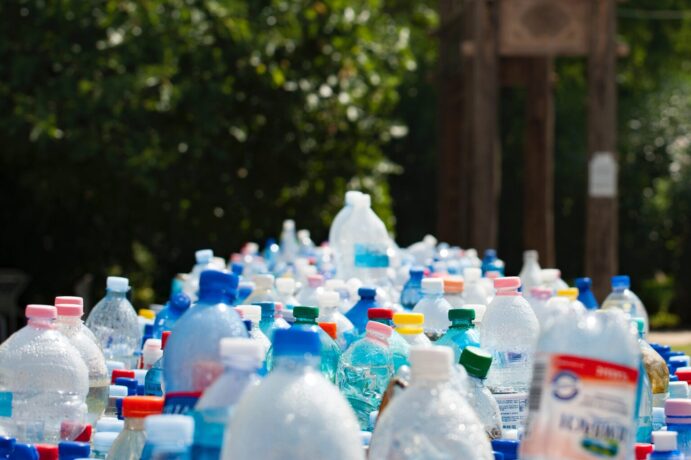
BPA and BPA analogues
One of these xenoestrogens is BPA (Bisphenol A), exposure to which can also be reduced by avoiding handling till receipts (32) unless necessary and by minimising or avoiding tinned foods which are lined with BPA (33).
Growing evidence indicates that BPA is obesogenic (34) and may be a driver of visceral obesity (fat around the middle), insulin resistance and inflammation (35). BPA has also been linked with diabetes, high blood pressure, cardiovascular disease, autism, a decrease in antioxidant enzymes, endometriosis, reproductive cancers, infertility, neonatal mortality, multiple ovarian cysts, sexual dysfunction, and attention deficit hyperactivity disorder (ADHD).
A foetus has 5 times lower levels of the main enzyme involved in BPA detoxification and so is particularly sensitive to BPA that crosses the placenta.
Canned foods are usually heat treated to sterilise them and this causes the release of BPA into the food. Acidity, alkalinity, salt, glucose and oil in a food in contact with a container, prolonged storage time, higher storage temperatures, irradiation of the food, exposure to sunlight, ageing of the container, repeated use of the container and washing of the container, especially with detergent and brushing the container (a common practice in cleaning baby bottles), will all increase the release of BPA into the food or drink stored or later to be stored in the container (36).
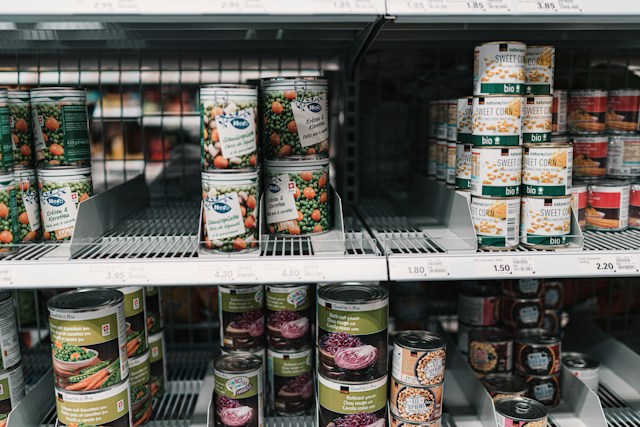
Unfortunately BPA-free plastics may or may not be an improvement, since usually you will have no way of knowing whether the plastic contains BPA analogues. Many of these analogues are also endocrine disrupting chemicals to a similar or even greater degree than BPA , are neurotoxic and can have toxic effects on your reproductive system (37). Research on BPA analogues is limited, but so far the evidence is in support of these analogues also being obesogenic (38).
A plastic being labelled ‘BPA-free’ may also offer little value for another reason I will discuss shortly.
Phthalates
Another family of endocrine disrupting chemicals found in soft plastics is the phthalates, also found in cosmetics, personal care products, paints, some medical devices and medications (especially timed release formulations). Their primary use is as a plasticiser to make plastic more flexible.
Phthalates leach from plastics into the environment and we can be exposed to them through ingestion, skin contact and inhalation (39).
Foetal and childhood exposure to phthalates can perturb normal development and have been linked with an increased risk of developing allergic disease such as asthma and eczema (40).
Phthalates have also been linked with ADHD, reduced sperm quality (41) and reduced testosterone levels (42) and phthalate exposure is also associated with obesity (43).
Phthalates have also been linked with depression and this may in part be due to their inflammatory effects (44), so if you detox and reduce inflammation you may also improve your mood. I discussed the connection between depression and inflammation in the previous post of this series.

BPA, BPA analogues and phthalates – just the tip of the iceberg?
You may well have heard of BPA even before reading this post, and phthalates and even BPA analogues might also be familiar to you and have received a fair amount of attention in the research community over the years. If you have already been reducing your exposure then you have made a good start to detox and reduce inflammation.
However, a 2021 study investigated 24 everyday plastic products of 8 different polymer types exposed to water at 40°C over 10 days and found that “plastics products leach many more chemicals than previously known”, some of which demonstrate potentially toxic properties. Hundreds to thousands of chemicals were leached from the plastics under “realistic conditions” (though they will rarely be exposed to temperatures of 40 °C in the UK from climate alone), highlighting that “humans are exposed to many more plastic chemicals than currently considered in public health science and policies” (30).
This is the reason by ‘BPA-free’ may turn out to be of limited support to detox and to reduce inflammation, BPA being just one toxin amongst potentially thousands of other toxins in plastic materials.
Plastic bottles and microplastics
Plastic bottles can release microplastics (tiny particles of plastic) and endocrine disrupting chemicals (45) into water. Microplastics can cause local tissue damage and inflammation and may potentially cause metabolic disease, neurotoxicity and increased cancer risk.
Microplastics also release their constituent compounds into the water (46). These could include phthalates and BPA or BPA analogues.
A 2018 study tested many brands of bottled water and found microplastic contamination in 93% of plastic bottled water (47). Each twisting of the plastic cap as you open and close the bottle causes enough friction to release somewhere around 500 microplastic particles into your water (48).
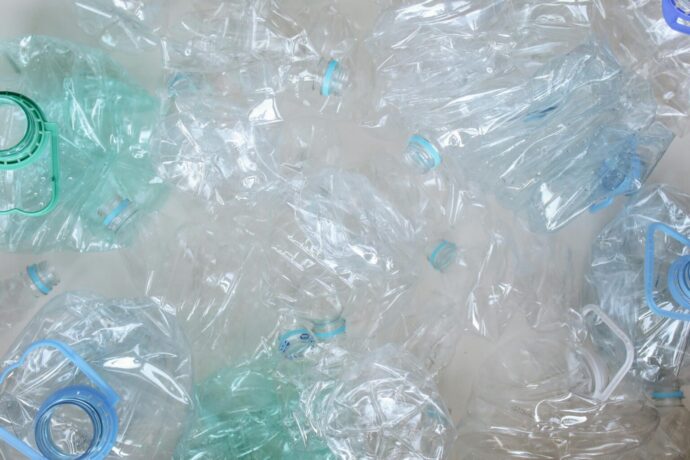
In search of a non-toxic reusable travel coffee cup
Whether for health or environmental reasons, alternative coffee cups made of materials such as bamboo with rubber lids have become more popular. However these seemingly innocuous cups contain flame-retardant melamine plastic that can release formaldehyde (49).
There are also melamine free bamboo cups that instead use the ‘bio-plastic’ PLA.
A ‘bio-plastic’ is made from biological materials rather than from petroleum, but is not necessarily biodegrable, and PLA requires the unnatural temperature of at least 55°C to biodegrade rather than turn into microplastic particles. These microplastic particles have been found to be “severely toxic to aquatic life and might be a threat to the human population through the food chain” (50).
Furthermore, since currently there is a dearth of research into the potentially hazardous effects of PLA to human life, I would argue for caution and avoid cups lined with PLA pending further research, especially given the known toxic effects on aquatic life.
Safer materials to choose from for your reusable travel coffee cup would be glass or borosilicate glass, enamel, ceramic, or even stainless steel. Check there is no plastic that will be exposed to your coffee or even steam coming from your coffee that will then condense back into your coffee.
There are also cups made of, for example, rice husks with a silicone lid, that claim to not have the melamine plastic lining nor any other kind of plastics.
Whichever cup you choose, carry one in your bag and you will find that most coffee shops will be happy to fill it up in lieu of a plastic-lined disposable cup with a plastic lid and may actually give you a discount.
Toxic Teflon and safer alternatives to non-stick cookware

Also avoid the use of PTFE (Teflon) non-stick cookware which can release toxic fumes even at normal cooking temperatures and instead opt for cast iron, glass, enamel, stone or ceramic cookware. Stainless steel is probably fine unless you have a nickel sensitivity. Even if newer PTFE products lack the toxic PFOA, the chemicals used to replace it may well have similar toxicity (51). Even a tiny crack in your Teflon cookware can release thousands of microplastic particles (52).
The precautionary principle
You might find all this evidence of toxic compounds in your environment distressing, but you may also use the information to learn how to empower yourself. One helpful observation we could make is that all chemicals that are now banned were once legal and took some time to be banned, meeting with inevitable opposition on the way, as happened when it dawned on us that smoking is harmful to health.
Therefore in my opinion any chemical that we have not coexisted with and evolved with for millennia should be treated as potentially guilty until thoroughly proved innocent.
Forever chemicals – PFAS
So it is that despite any protestations you may come across I would take heed that use of teflon coated dental floss and stain-resistant carpets and furniture are associated with higher blood levels of PFAS (53), also found in plastic food containers and many stain-resistant and water-resistant treatments as well as flame retardant treatments.
PFAS (per- and polyfluoroalkyl substances) are a family of toxic chemicals including PFOA in Teflon. Most PFAS persist in the environment due to the very strong bond between carbon and fluorine and PFAS are sometimes referred to as ‘forever chemicals’.
There is some evidence linking PFAS exposure in populations with an increased risk of dyslipedemia (linked to cardiovascular disease), blunted neurodevelopnent and immune function in children, and cancer (54).
There is evidence that manufacturers were aware that PFAS bioaccumulates in blood as far back as the 1950’s and animal studies in the 1960s indicated potential health risks, but the risks were hidden from the public (55).
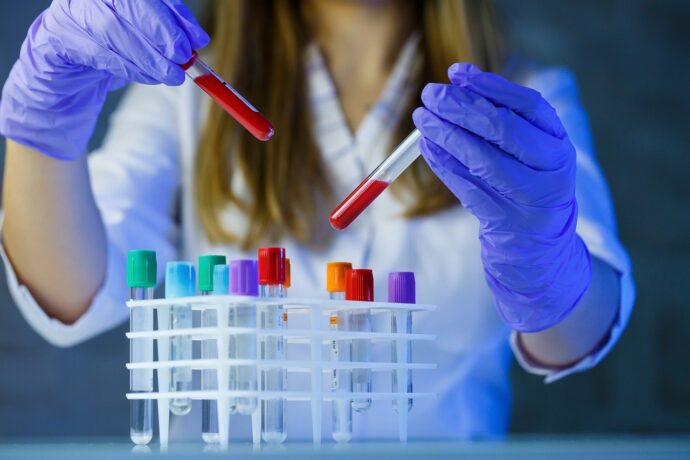
Is that smoother glide in between your teeth really worth the risk when there are plenty of teflon-free products to choose from and even floss made from natural materials? Currently we do not know how to detoxify PFAS, so avoidance of PFAS would be a wise first step on your journey to detoxify and reduce inflammation.
The Environmental Working Group has published a list of manufacturers of products that are claimed to be free of PFAS, which can also serve as a list of the kind of products that might contain PFAS. PFAS Free provide information about products available in the UK including a list of supermarkets and their levels of commitment to PFAS free food packaging and even information on PFAS-free school uniforms.
Toxins from cosmetics and personal care products
Another common source of toxins that include PFAS, phthalates and other endocrine disrupting chemicals are cosmetics and personal care products. Though it is beyond the scope of this post to list the many potential hazardous chemicals used in these products, they should definitely be considered in any attempt to detox and reduce inflammation, so it is worth doing some research on the ingredients or buying certified organic products.
The Environmental Working Group provides some resources on understanding labels and making better choices when purchasing cosmetics, sunscreen and food, and provides lists of recommended brands for US consumers. European products are available at a discount to readers of this blog, but do still check all ingredients as not every product from this supplier would have my endorsement.

Plastic detox to reduce inflammation – finding alternatives
See if there are alternatives to the plastic products you use. It can be very difficult to buy food that isn’t wrapped in plastic or contained in plastic, but when possible choose glass over plastic and tin.
For drinking water when you are on the go you can now purchase glass bottles with a protective cover to reduce the risk of breakage and use these to transport water you have filtered or distilled at home.
If you use tupperware purchase glass tupperware. Even if the lid is plastic at least it won’t be coming into contact with your food provided you don’t overfill the tupperware and keep it horizontal. In most cases you can remove the lid and put the glass tupperware with food straight from your fridge into your oven. When you put hot food into your glass tupperware allow it to cool before putting the plastic lid on.
Next time you buy a new kettle, consider an old-fashioned stainless steel kettle you warm on the stove. Another advantage of such a kettle is that if it is well-designed it will not need as frequent replacing as an electric kettle with plastic parts.
If you are a member of a spa where flip-flops are provided, buy and take your own natural rubber flip-flops that are free of plasticisers.
Small changes like this will initially take a little bit of extra work, but then become part of your (less toxic) routine.
Toxic foods
Ultra-processed foods are toxic and inflammatory
Food should also be organic as much as possible and lacking artificial additives unless you have thoroughly researched the safety of the additive. You can assume that if a chemical is not one that we evolved with over millennia it may well be toxic to us, unless proven to be safe, though this is just one of many reasons why ultra-processed foods are highly inflammatory.
Even an extract from red seaweed that sounds benign and ‘natural’ (carrageenan) can degrade and has been demonstrated to cause intestinal ulceration and tumours in animals (56) and prolonged inflammation in human intestinal cells (57).
Citric acid is a common additive in tomato puree, which occurs in fruits and vegetables and so in moderate amounts is likely to be safe and non-toxic. However a few individuals can have symptoms from citric acid as a food additive because it is manufactured from aspergillus mould to which these individuals may be allergic. Thus the citric acid would be inflammatory (58) and this would outweigh the anti-inflammatory benefits of the beneficial phytochemical lycopene in the tomato puree for these few individuals.
The dangers of ultra-processed foods have been discussed at length by many health advocates so I won’t go into more detail about their addictiveness and how they impact on health. You can find out why Dr. Suneel Dhand believes that ultra-processed foods are a greater threat to health than smoking in his discussion with John Campbell, The Biggest Health Disaster of All Time.
Toxic fish and seafood
The oceans are becoming ever more toxic and it is tragic that one of our natural food sources believed to have played an important role in the evolution of the human brain – fish and seafood – may now be a potential cause of concern if eaten too frequently. Toxins now found in fish include heavy metals, microplastics, endocrine disrupting chemicals such as dioxins and PCBs, brominated flame retardants, pharmaceuticals, toxins from personal care products and polycyclic aromatic hydrocarbons (59, 60).
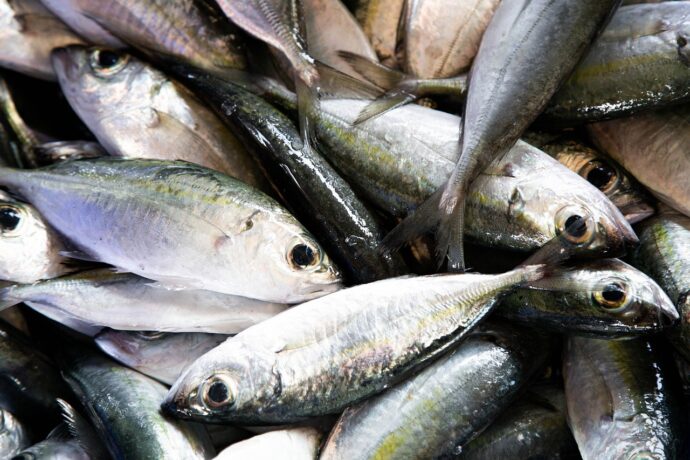
Mercury toxicity symptoms
Children who eat more fish have been found to have a lipid profile that is linked with better heart health, but also higher levels of blood mercury. Even at levels considered to be low, mercury was associated with increased inflammatory markers and a blunted daily cortisol response in these children (61). I will discuss stress and your stress hormone cortisol in depth in a later post, but for now, just in case you thought having a low cortisol response is a good thing, I will say that cortisol is anti-inflammatory and you need some cortisol to get out of bed in the morning and prepare you for the day ahead, although too much cortisol is indeed harmful.
Immune cells exposed to low concentrations of mercury chloride increase inflammatory signalling and decrease anti-inflammatory signalling, which could potentially increase the risk of infectious disease and autoimmunity from mercury exposure (62).
Some evidence suggests that mercury from amalgam fillings may cause fatigue, insomnia, depression, excessive anger and anxiety (63, 64). Mercury causes inflammation and can inhibit antioxidant enzymes, impact immune function, inhibit the energy-generating mitochondria and can cause high blood pressure, kidney disease and heart disease, potentially countering the cardiovascular benefits of the omega-3 fatty acids in oily fish. Mercury also inhibits the COMT enzyme (catechol O-methyltransferase), which is responsible for breaking down dopamine, adrenaline and noradrenaline, resulting in higher levels of stress and elevated blood pressure (65), which can be compounded by a genetically less active COMT enzyme.
Blood levels of mercury associated with seafood consumption have been also been linked with both male and female infertility (66) and pre-natal and early post-natal exposure to mercury can skew the immune system in a way that increases the risk of allergy (2). Mercury has even been linked with alopecia areata incognita (67), a condition found predominantly in young women and characterised by abrupt and intense hair loss (68).
Can we make recommendations for fish consumption to reduce exposure to mercury and other toxins?
Mercury bio-accumulates in the fat of larger oily fish further up the food chain and with a longer lifespan so instead of tuna and swordfish focus on smaller oily fish which you can remember by the acronym SMASH – sardines, mackerel, anchovies, (wild) salmon and herring (69).
It is difficult for me to give generalised recommendations regarding seafood consumption as in clinical practice I see some individuals accumulate heavy metals and other toxins more easily than others, which can be due to genetics (70) and various other factors beyond the scope of this post.
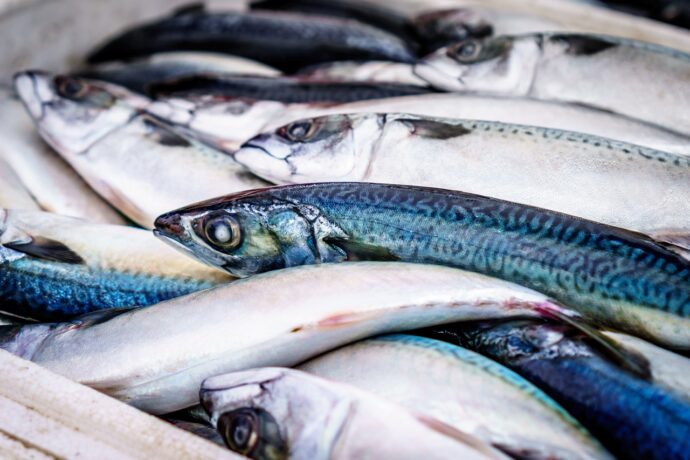
Therefore if you choose to eat oily fish rather than supplement to provide you with essential anti-inflammatory omega-3 fatty acids I would recommend comprehensive periodic testing with a suitably qualified practitioner to check that heavy metals are not accumulating to potentially harmful levels, and to guide you in a safe and effective detoxification protocol if necessary.
I do recommend avoiding or at least minimising your intake of farmed salmon which is another source of xenoestrogens (71, 72).
Mercury detoxification
You can to some extent support detoxification of mercury by including chlorella and coriander with your meals (73), though I would have the coriander at a separate meal from any fish or seafood you may eat in case it pulls mercury into your tissues, whereas chlorella will bind to mercury and prevent its absorption from fish eaten at the same meal. Garlic can also support detoxification of mercury, lead and cadmium (74, 75).
Toxins from cooking
In your efforts to detox and reduce inflammation you are likely to have thought about what foods you would choose to eat, but how you cook the food you eat should not be overlooked.
Advanced Glycation End Products – AGEs age you
I recommend eating charred foods only occasionally as these will add a further burden to your detoxification pathways and drive inflammation. The browning of foods that we so love the taste of is caused by a reaction of amino acids with sugars at high temperatures in what is known as the Maillard reaction. Be it in browned meats, breads, onions or other foods, this reaction results in the formation of Advanced Glycation End Products (76) which can also be formed when glucose binds to proteins in your body as a result of high blood sugar (77).

These are interestingly named because the commonly used acronym AGEs describes exactly the end result to your tissues, both externally as your skin ages at an accelerated rate (78) and internally, for example by reducing the elasticity of your vasculature and by causing the plaque that leads to heart disease to buildup in your arteries (79, 80, 81). There is some evidence that AGEs accumulate in human tissues causing the cartilage that protects your joints to become stiff and brittle (82).
AGEs drive inflammation (83) and play a role in the development of many diseases such as heart disease, diabetes and its complications, kidney disease and Alzheimer’s disease (84) as well as osteoporosis, osteoarthritis, rheumatoid arthritis and cataracts (85). AGEs can also contribute to the development of neuropathy and neurological disorders and some AGEs have toxic effects in the blood vessels, liver and retina and can promote some cancers and infertility (86).
Other than by reducing excessively browned or charred foods and using gentler cooking methods such as steaming or slow cooking you can reduce AGE-ing of both your skin and your internal tissues by keeping your blood sugar balanced, as I describe in Blood Sugar Balance – The Key to Health, Weight Loss and Stress Reduction.
Toxins in grilled meat and fish – Heterocyclic amines and polycyclic aromatic hydrocarbons
Prolonged cooking of meat and fish at high temperatures of above 150°C can also result in the production of carcinogens (87) (heterocyclic amines and polycyclic aromatic hydrocarbons), especially when barbecued, grilled, fried or smoked (88).
Prolonged barbecue grilling can lead to particularly high levels of these compounds in your food as a result of fat dripping onto the charcoal where it burns and smokes (89). These compounds place an additional burden on your detoxification pathways as your body needs to metabolise these compounds somehow to minimise any damage (90, 91).

It is often argued (correctly) that pleasure is a vital and health-promoting aspect of life and I myself occasionally enjoy a grilled steak, but I cook most of my food on a daily basis, and especially meat and fish, at lower temperatures of around 150-160°C, or I slow cook at even lower temperatures. There are plenty of other ways to enjoy your food on a daily basis and then you may find that when you do have the grilled steak you enjoy it all the more for it being occasional.
I am just giving you information here and am not intending to judge anybody for their choices, nor for you to judge yourself or others as a result of reading this, but when you do eat charred foods I recommend taking some precautions.
For example it has been shown that marinating or cooking with herbs and spices will reduce the formation of these harmful compounds due to their antioxidant properties (92, 93, 94, 95). Another precaution would be to eat more anti-inflammatory foods with your meal, which I will discuss in depth later in this series, and which will include a section on foods to reduce inflammation from meat eaten at the same meal.
Toxic water
You need to stay well hydrated to support elimination of toxins, but water can also be a source of toxins.
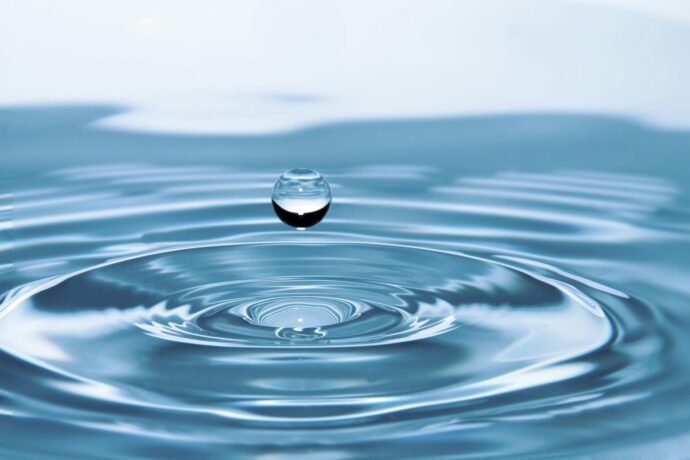
All kinds of contaminants may be found in groundwater including pesticides, nanoparticles, pharmaceuticals, industrial compounds, toxins from personal care products, fragrances, flame retardants, surfactants, food additives and even caffeine and nicotine and many of these can make it into the drinking water supply (96). A 2019 study in the US concludes that “decreasing the levels of contaminants in drinking water represents an important opportunity for protecting public health” (97).
Note that groundwater can contain all of these contaminants, so if you have a private water supply from a borehole, spring or well, I would advise testing your water to see if whatever purification systems you have in place are adequate.
Reverse osmosis filter systems and distillation will remove more toxins than lower cost filters but also remove minerals and this can have a significant impact on your bone mineral density and on your dental health (98). The water can then be replenished with liquid mineral supplements. The advantage of distillation is that at least you know this technology is effective at eliminating most toxins from your water, unlike many lower cost filters.
Natural mineral water or spring water bottled at source must adhere to strict guidelines governing both its purity and its mineral content and may also be a good choice if the bottle is glass.
Toxic pesticides and herbicides
Pesticides and antibiotic resistance
You will be familiar with antibiotic resistance from overuse of antibiotics, but pesticides in the environment can also confer antimicrobial resistance and it is now a subject of study as to whether the resulting antibiotic resistant genes can then impact human health (98). If this idea is now being taken seriously, you might wonder if pesticides we ingest could be contributing to antimicrobial resistance in our intestines.
We know, for example, that mercury is antimicrobial (99), which might not surprise you, but when monkeys were given mercury amalgam dental fillings, the resulting mercury-resistant oral streptococci bacteria were also resistant to some antibiotics and could transfer this resistance to other bacteria in a laboratory setting (100).
In any case, let’s examine some more solid evidence that pesticides and herbicides could have a negative impact on human health. I’ll be focusing on organophosphates and glyphosate, which together cover the more common pesticides and herbicides you will be exposed to.
Organophosphates
Organophosphates are used in pesticides, herbicides and in manufacturing plastics and solvents and have also been used as nerve gases since World War 1.
They inhibit an enzyme that breaks down acetylcholine, a neurotransmitter, that is a molecule that is used to pass a signal from one neuron usually to another neuron. In the case of acetylcholine it can also be a signal from a neuron to a muscle fibre to cause muscles to contract.
Organophosphates can therefore cause an accumulation of acetylcholine around the nerve endings that receive the signals and this results in overstimulation. This is the mechanism of organophosphate toxicity to both insects and humans alike.
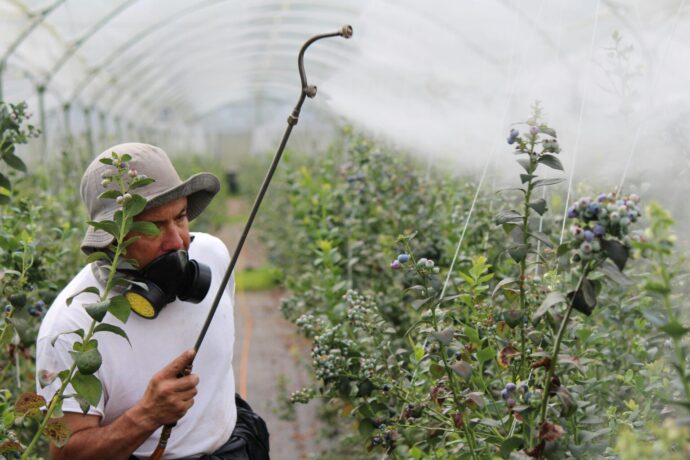
Exposure can be through inhalation, direct contact and ingestion and both acute and chronic exposure can cause a whole array of symptoms affecting the nervous, respiratory and cardiovascular systems as well as impacting your gut and kidneys. Elevated blood sugar, flu-like symptoms, malaise, weakness, memory loss, speech impairment and lack of co-ordination are just a few of the potential symptoms of chronic organophosphate exposure (101).
Organophosphates may play a role in driving inflammation and inflammatory diseases (102) and there is some evidence that organophosphate exposure may be linked with diabetes, weight gain, high blood pressure and kidney disease (103).
Some commonly used organophosphate pesticides inhibit enzymes that metabolise oestrogen into a safe oestrogen metabolite and one of these pesticides does so irreversibly (104). This could potentially lead to more oestrogen being metabolised by different enzymes that form more toxic and inflammatory oestrogen metabolites that can damage DNA. The ratio of one of these more harmful oestrogen metabolites to the safer oestrogen metabolite as measured in the urine may be a useful marker of breast cancer risk (105).
Levels of one particular organophosphate residue in urine have been linked with ADHD in a dose-responsive manner (106) and the association holds at normal levels of exposure in US children (107). If organophosphate exposure does actually cause ADHD a likely mechanism has been elucidated, since acetylcholine is involved in regulating neurons that use dopamine as a neurotransmitter (108), dopamine being a neurotransmitter that supports motivation and focus.

Organophosphate pesticide exposure has also been linked with Parkinson’s disease, with some evidence supporting a causal mechanism in which the pesticide inhibits an enzyme that metabolises DOPAL.
DOPAL is a natural downstream metabolite of dopamine, which plays a key role in both ADHD and Parkinson’s disease, but if not sufficiently metabolised DOPAL is toxic to dopamine-signalling neurons (109).
Pesticides from other families such as organochlorine pesticides have also been linked with Parkinson’s disease due to their neurotoxic effects, but some research indicates a neuroprotective effect from theanine that may thus help to prevent Parkinsons’s disease development (F). Theanine is a compound in tea and a supplement commonly used to reduce anxiety and improve mental focus and sleep, but with many lesser known benefits for the health of your brain, heart and liver.
Some organophosphates have been shown to poison the energy-generating mitochondria and cause inflammation in cells lining the gut, and the resulting gut dysfunction may also play a role in Parkinson’s disease development (110).
Some pesticides, both organophosphates and other compounds, can interfere with sex hormone signalling by binding to hormone receptors and have been linked with lower testosterone levels and even delayed gonad development in adolescent males (111).
In the next post I will discuss an enzyme that detoxifies organophosphate pesticides, and how this enzyme also plays a role in detoxifying inflammatory oxidised fats. An organophosphate pesticide burden could overwhelm this enzyme and thus increase your risk of heart disease and inflammation. Thus reducing your exposure to organophosphate pesticide is key to detox to reduce inflammation.
Glyphosate and Roundup
Glyphosate is the most common herbicide used in the UK and is the most heavily used herbicide globally, both in residential and agricultural settings (112). It is sold by Monsanto under the trade name Roundup, which is also mixed with other undisclosed compounds. Roundup Ready crops are genetically modified to be resistant to glyphosate, so that Roundup can be used to control weeds without killing the crop.
It may not be killed but if sprayed with glyphosate you might consider it ‘damaged’ as a crop for human consumption. The Roundup Ready crops are the ones that produce sterile ‘terminator’ seeds that you are probably familiar with, which means that farmers are dependent on Monsanto for more seed every year (113).
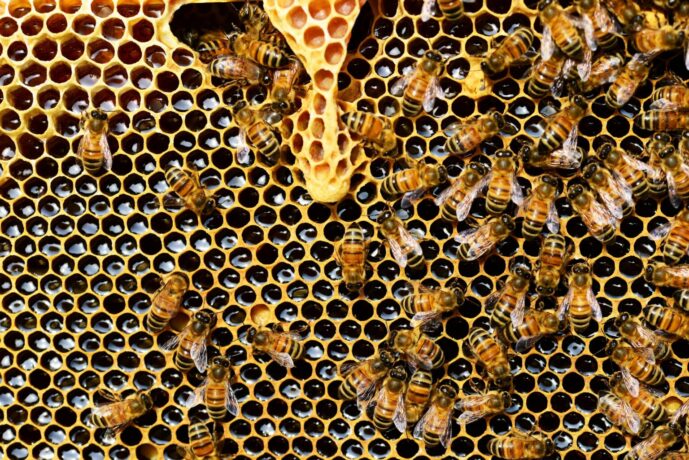
You will have heard about the decline in insect populations including the bees that are needed to pollinate the crops we depend on. A 2022 study found that glyphosate exposure at normal environmental levels impairs the ability of bees to regulate the temperature of their nest and may thus be a causative factor in the dwindling of bee populations that could eventually threaten our food supply (114).
I imagine that for some sensitive beings what I have just described could be enough to make you recoil from the use of RoundUp in your garden (as is so common in the UK), but this being a scientific educational site concerned with measurable effects on human health, you may on the other hand be expecting me to provide more evidence for Roundup’s health effects.
Here I will just pick out some of the evidence for glyphosate being harmful to health, rather than focusing on picking apart the data, conclusions and funding of any of the deniers out there.
It has been claimed that glyphosate targets one specific pathway, the ‘shikimate’ pathway, that occurs in plants and microorganisms but not in humans (115) and therefore does not harm humans.
However it is now well established that the gut microbiome plays a key role in human health.
In animal studies pathogenic microbes have been found to have a high degree of resistance to glyphosate. Beneficial gut fora that would normally keep the pathogens in check, however, are sensitive to the effects of glyphosate (116, 117). This effect of glyphosate in killing off beneficial gut flora and sparing pathogens could explain the increase in Clostridium botulinum infection in cattle since the turn of the century (118).
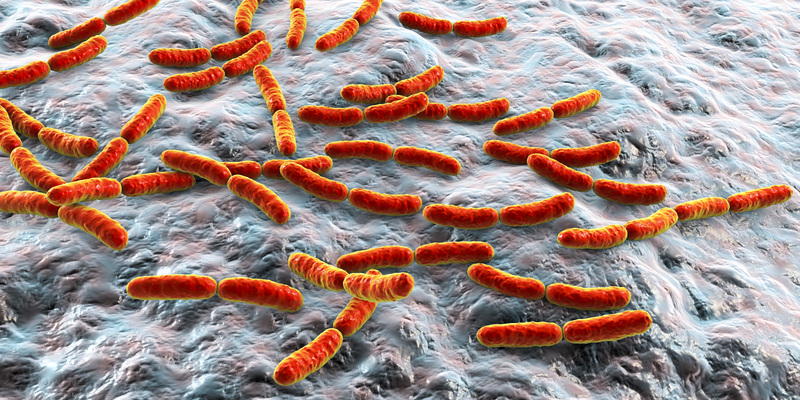
Glyphosate has been found to inhibit testosterone production in mice at a low dose, by damaging the mitochondria that are vital to testosterone synthesis (119). This effect appears to be independent of the damaging effects of glyphosate on the gut microbiome, thus demonstrating another fallacy of the argument that glyphosate is harmless to humans because its more advertised toxic effect is on microbes and weeds.
Should anyone ever tell you that a chemical is safe because it acts or does not act on one known pathway, you can ask them if they have tested the chemical on every other pathway in the human body (of which there are thousands). My personal opinion is that this demonstrates why it is deeply misguided to criticise the precautionary principle as ‘unscientific’, at least when applied to systems as complex as biological systems are.
A 2015 study examined the effects of a ‘low environmentally relevant’ dose of glyphosate based herbicide on rats and concluded that “chronic exposure…at an ultra-low, environmental dose can result in liver and kidney damage with potential significant health implications for animal and human populations” (120).
Growing evidence indicates that glyphosate may play a role in birth defects, liver and kidney damage, tumour formation and endocrine disruption, with some of these effects detected at levels that are lower than regulatory ‘acceptable’ levels. Furthermore adjuvants in commercial herbicide formulations enhance the toxicity of glyphosate (121).
Glyphosate is also neurotoxic to humans at levels lower than the acceptable limits set by regulatory agencies. It affects the development of the nervous system and can cause oxidative stress, neuroinflammation, mitochondrial dysfunction and hence neuronal cell death and behavioural and motor disorders (122).
In the next post in which I discuss how to improve detoxification with nutrition, you will learn about the enzymes that actually detoxify chemicals in your body. Glyphosate inhibits many of these enzymes which therefore increases the toxicity of other contaminants and this further drives inflammation in a toxic ‘cocktail effect’ (123).

It has been proposed that glyphosate may be the main driver of the recent rise in gluten intolerance and the coeliac disease epidemic, since coeliac disease and glyphosate toxicity have some very similar effects. These effects of both glyphosate exposure and coeliac disease include a reduction in certain amino acids and neurotransmitters, mineral deficiencies, impaired detoxification and an increased risk of non-Hodgkin’s lymphoma. The reproductive issues linked with coeliac disease could be a result of glyphosate exposure, and these include infertility, miscarriages and birth defects (124).
Glyphosate has been labelled as ‘probably carcinogenic’ by the International Agency for Research on Cancer back in 2015 (125, 126).
In a 2018 multi-million dollar lawsuit a groundkeeper was awarded damages by Monsanto after being exposed to Roundup on a long-term basis and developing non-Hodgkin’s lymphoma. Whether or not toxic effects could be due to the glyphosate itself or to additives that may potentially be more toxic than glyphosate, the case was successfully made that Monsanto had failed to warn consumers of the cancer risks of using their product (127).
You can find out more about the evidence for the environmental and human health impacts of glyphosate based herbicides by reading some of the documents provided by Pesticide Action Network UK.
Detox and reduce inflammation by reducing pesticide exposure
We can make choices to limit our exposure to pesticides and herbicides which could be having a big impact on our attempts to detox and reduce inflammation.
To minimise exposure to pesticides and herbicides eat organic food as much as possible, drink clean water, choose natural products for your garden and non-toxic methods of pest control in your home as much as possible and spend as little time on or around golf courses where that pristine weed-free perfection may come at an unexpected cost (128). If possible don’t spend too much time around crop fields where pesticides are used.

In particular avoid conventionally grown grains, seeds and pulses, that are likely to be contaminated with glyphosate that is sprayed on these crops to kill off surrounding plants for an easier harvest. GMO crops such as soy, corn, alfalfa, canola, cotton, sugar beets and sorghum have been developed to be resistant to glyphosate (129) and so are likely to be some of the crops most contaminated with this toxin. GMOs are also used in feed for conventionally grown animals.
This contamination of food with pesticides and herbicides may be part of the reason why increased frequency of organic food consumption has been linked with a reduced risk of cancer (130), and cutting costs by choosing conventional foods may turn out be a false economy.
Reducing pesticide exposure on a budget
If you can only afford to eat some organic food, prioritise animal produce such as meat, eggs and dairy produce, since toxins tend to accumulate higher up the food chain and are often stored in body fat.
Also prioritise organically grown grains, beans and pulses and in particular the glyphosate resistant crops listed above.
The Environmental Working Group releases an annual shopper’s guide to pesticides which lists the safest and the most contaminated fruit and vegetables, the ‘Clean Fifteen’ and the ‘Dirty Dozen’ respectively, though this is based on US data. To find out more about pesticide use in UK produce and also about the ‘cocktail effect‘ see the Pesticide Action Network UK who also provide information on glyphosate.
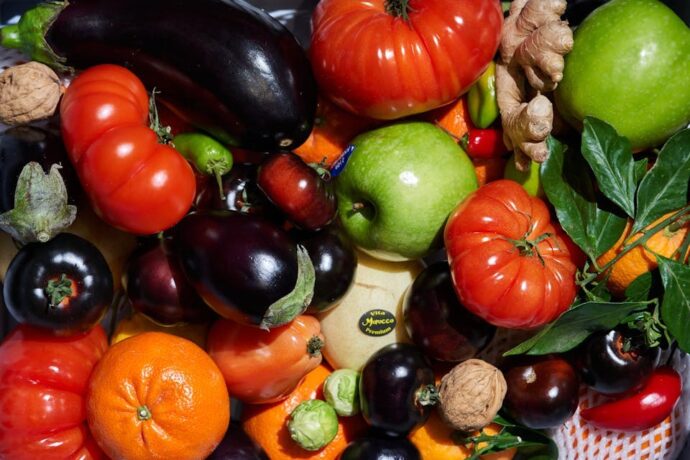
For any fruit or vegetables that are not organically grown, washing your produce in a solution of baking soda can help remove some of the pesticides. A 2017 study took organic gala apples and exposed them to a fungicide and an organophosphate pesticide for 24 hours. It was then found that washing the apples for 15 minutes in a 1% solution of baking soda removed 80% of the fungicide and 96% of the organophosphate pesticide. The fungicide penetrated more deeply into the apple and thus less of it was removed by washing (131).
We need to remember that there are many other herbicides, fungicides and pesticides in use in conventional farming methods, some of which could penetrate the produce more than others. These toxins are likely to have been applied to your produce for much longer than 24 hours before they reach your kitchen, and perhaps that could lead to further penetration of the produce. Furthermore some produce is likely to more readily absorb a given toxin than others. Despite these limitations this study does indicate that using baking soda solution is likely to be more effective than washing your produce in plain water.
You can also improve organophosphate detoxification by supporting a key enzyme that helps to break down organophosphates, as explained in the next post in this series, and genetics play a role in the functioning and levels of this enzyme.
To detox and reduce inflammation is not a sprint – “The journey of a thousand miles begins with a single step“

This post is rich in detail. Perhaps that is just what you wanted, but you may also find this information causes you anxiety, fear or overwhelm.
So how can you use this information to empower yourself, to take action to improve your health without feeling overwhelmed, bearing in mind that to detox and reduce inflammation is a process that should not be rushed?
I suggest you implement 1, 2 or even 3 changes from this post or from the whole series of posts on inflammation that you feel most drawn to and that would be easiest for you to focus on to begin with. Note that I have made few precise suggestions for changes to make in this post, so that you can set your own goals. Perhaps your target could simply be to stop drinking water from plastic bottles on Sundays when you are at home if that is what seems achievable for you. Perhaps it would make more sense to find out more about which products contain PFAS ‘forever chemicals’, since currently we do not know how to detoxify these. Don’t be so ambitious or hurried as to override your own psychology as you may be setting yourself up for failure and disappointment. Set yourself realistic goals. This is the way to make lasting change.
Make a note in your diary to come back to this series in 30 days time, once the changes you have made have become routine. Now you can set the next few goals for yourself to focus on for the next 30 days.
If you slip up don’t be hard on yourself. Kindness to yourself is the best way forward with implementing behavioural change. There are many resources available to encourage this attitude but you could begin with reading this article on how to change habits with kindness.
The kindness I am referring to is one that includes kindness to your future self, rather than the ‘kindness’ that seeks instant gratification. This can be framed as kindness allied with mindfulness and can be termed ‘self-compassion’ (132).

Functional medicine, nutritional therapy and genetic testing to support detox and reduce inflammation
A functional medicine practitioner, nutritional therapist or suitably qualified naturopath can guide you in testing for many different kinds of toxins, including heavy metals, pesticides, flame retardants, BPA and mycotoxins and also indirect markers that could suggest a potential toxic burden. The results from these tests can inform a more targeted dietary and lifestyle approach, which can be further individualised with genetic testing to determine your less efficient detoxification pathways and the specific nutrients and dietary and lifestyle changes you can make to support the associated enzymes for safe and effective detox and to reduce inflammation.
Detox to reduce inflammation
I have given a selective overview of detoxification and described the relationship between inflammation and detoxification with oxidative stress and antioxidant reserve as a linking factor. I discussed many toxins you are likely to be exposed to and how to reduce your exposure to these toxins.
Do you feel armed with the knowledge you need to begin to make steps to reduce your exposure to toxins so you can begin to detox and reduce inflammation? Which of these changes do you feel most drawn to implement? Let me know in the comments below.
Posts in the 10 Steps to Reduce Inflammation series:
INTRODUCTION:
10 Steps to Reduce Inflammation – What is Inflammation and Why Reduce Inflammation?
STEP 1: DETOX TO REDUCE INFLAMMATION
Detox to Reduce Inflammation – YOU ARE HERE
How to Improve Detoxification With Nutrition – COMING SOON.
SIGN UP TO THE NEWSLETTER TO BE NOTIFIED WHEN EACH NEW POST IS RELEASED.

